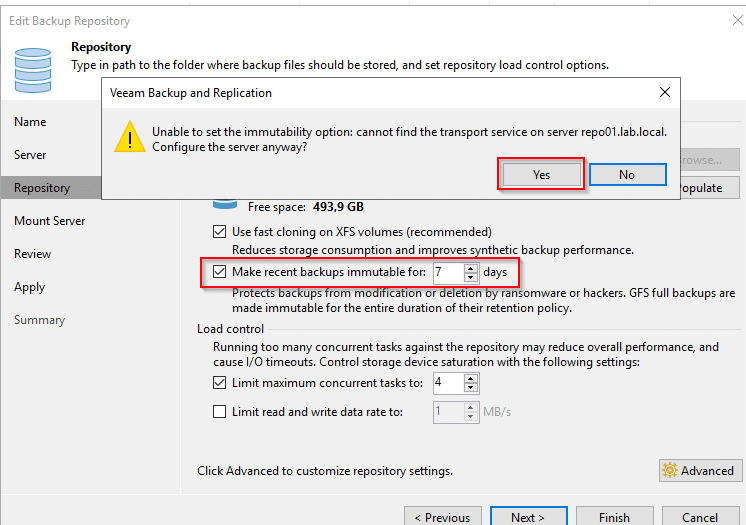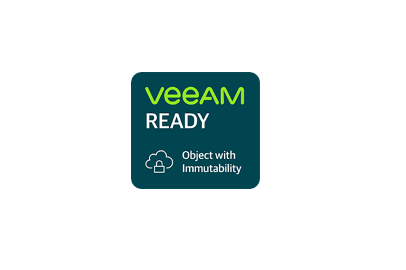

And in the Secret Key field, enter your applicationKey. After you’ve done this, click the Add button to enter your B2 credentials.ħ) In the Access Key field, enter your keyID. Then, enter the 2nd part of the S3 Endpoint (in this example it is ‘us-west-001’). You should now see it in the Backup Repositories section along with the Default Backup Repository.ġ) On the Backup Repositories screen, click the Add Repository button.Ĥ) On the next screen, select S3 Compatibleĥ) Enter a name for the Repository and click Next.Ħ) Add the S3 Endpoint you gathered earlier and enter it in the Service Point field. Once the Apply page shows green checkmarks for each step, click Next.ġ1) In the popup asking you to change the configuration to the new repo, click No.Ĭongratulations! You’ve set up a local Repository to use in your Scale Out Backup Repository. Once you’ve selected your choice, click the Next button to advance.ĩ) Click Next and then Apply on the two following screens to Apply the settings. By default, Veeam will create a folder called “Backups” at the root of the drive. In this example, we’ve highlighted the E drive.Ĩ) On the next window you may specify a folder on the drive by clicking Browse. Once it’s highlighted, click Next to continue.

#VEEAM IMMUTABLE BACKUP WINDOWS#
You can follow these steps to do so.ġ) Launch Veeam on your Windows Server and click Connect.Ģ) Navigate to the Backup Infrastructure section and click on Backup Repositories in the left-hand column.ģ) Click the Add Repository button on the ribbon at the top of the windowĤ) Select Direct attached storage in the following windowĥ) Choose Microsoft Windows on the next screenĦ) Give your Repository a Name and Description and click Nextħ) Click Populate and click on the drive you wish to use. To create a Scale-Out Backup Repository, you must first add a local storage component as a Backup Repository. Now that you have the applicationKey, keyID, and S3 Endpoint you are ready to start setting up the Repository in Veeam. Make sure you copy the keyID and applicationKey listed somewhere safe as the applicationKey will NOT be available again to view once you leave the page. Then click Create New Key.Ħ) In a blue box on the App Keys page you’ll now see the keyID and applicationKey listed here, along with the S3 Endpoint we saw when making the bucket. Note that your Master Application Key will not be usable with Veeam Cloud Tier or our S3 compatible API.ĥ) Give your key a name and leave the other default settings.

Note the S3 Endpoint listed here for use later when setting up B2 with Veeam.Ĥ) Now click the App Keys link in the left-hand column to navigate to the App Keys page and click Add a New Application Key.

You can read more about Object Lock here.ģ) You will now see your Bucket on the Buckets page. To protect your offloaded backups from ransomware, Backblaze strongly recommends you enable object lock and use the Veeam immutability feature. Object Lock allows Immutability in Veeam to prevent your files from being changed. Once here, click the Create a Bucket button.Ģ) Give your Bucket a unique name and click Create a Bucket with Object Lock enabled. Get your B2 Application Key and S3 Endpointġ) Log in to your account at and click the Buckets link in the left-hand column. If you need assistance with installing Veeam in your environment, please see their website here: A guide for setting this up can be found here: Other editions can backup to B2 using our partner Tiger Bridge.
#VEEAM IMMUTABLE BACKUP PLUS#
Please note that this guide only applies to Enterprise and Enterprise Plus editions of Veeam Backup & Replication and Veeam Availability Suite. To protect against ransomware, Backblaze strongly recommends all Veeam customers to enable immutability when offloading their backups to Backblaze B2 using Cloud Tier.
#VEEAM IMMUTABLE BACKUP HOW TO#
This guide will walk you through how to set up B2 Cloud Storage as part of a Scale-Out Backup Repository with Immutability in Veeam using our S3 Compatibility API. Immutability is an important part of protecting backups from threats such as ransomware or stolen credentials by ensuring your backed up data is safe and secure for a specified timeframe. Additionally, Backblaze is certified as Veeam Ready - Object and Veeam Ready - Object with Immutability. Quickstart Guide for offloading Veeam Cloud Tier backups to Backblaze B2 with immutabilityīackblaze is a proud partner of Veeam and is fully compatible with Veeam Cloud Tier.


 0 kommentar(er)
0 kommentar(er)
